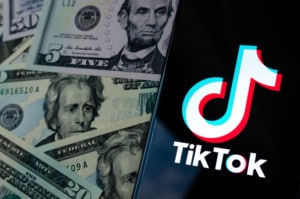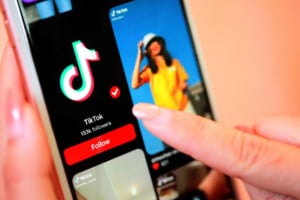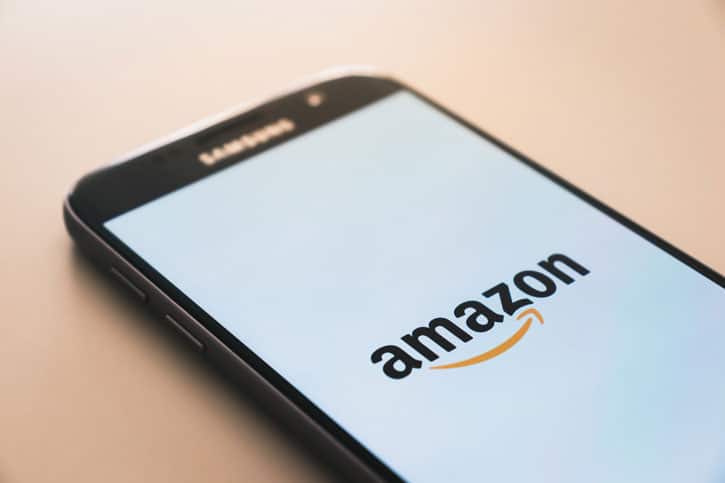

Are you a new brand or launching a product and not sure how to effectively measure user data? By examining consumer data using the Amazon Marketing Cloud, you can have greater insight into how to meet your customer across their shopping journey. Not only that, but you can even understand how your customer is engaging with your ads and what is motivating them to purchase.
For many brands, improperly measuring the impact of their sales marketing techniques can be detrimental. Without accurate data, you’re left in the dark on product capabilities, unable to budget properly, and can’t connect with your target audience.
So, how can you set your brand up for long-term marketing success?
Gloria Steiner, the Customer Success and Business Intelligence Team Lead at Perpetua, says that if you want to optimize your performance and appropriately allocate your budget, examining the customer-level data is key. Why? Because the Amazon Marketing Cloud allows you to follow the consumer touchpoint across multiple platforms, you can see how to maximize your brand’s fullest potential in real time.
Gloria’s advice? Use these insights to allocate your budget and market your product for best results.

Increasing your advertisement visibility can cause concern among brands that are worried they’re over or under influencing consumers on their journey — which is leading consumers to steer away from products and decrease your revenue.
How can a brand measure the value of visibility among consumers? Gloria recommends measuring the overlapping data between the display and video advertisements.
By adding an additional layer of visual advertising by video targeting, Gloria says that a consumer is 1.9 times more likely to purchase the product after viewing both ads, so viewing the impactfulness of the overlapping ads is beneficial for your brand. A video advertisement combined with a display campaign can clearly communicate the value and effectiveness of a product to the consumer — making them more likely to purchase the product.

When it comes to launching your product and advertising your product off and on Amazon, using the Amazon Marketing Cloud to measure your data can help you bring customers back for repeat purchases.
The Amazon Marketing Cloud can connect the dots between the effectiveness of ads across multiple platforms. Gloria’s experience has shown that this is important to see exactly where the product is purchased.
Knowing where consumers purchased your product is crucial for understanding how to better target your audience. If you’re a new brand or launching a new product, measuring the user metrics can help you build a better marketing strategy and gain traction. In turn, this will increase your revenue and scale your brand. Who doesn’t want that?

Adobe’s Marketo platform helps you get measurable results from acquisition to advocacy, all while keeping customers engaged. Marketo allows you to send emails, build landing pages and, most importantly, look at data so client journeys can be customized.
Specifically, Marketo’s lead scoring tools allow you to build out the customer journeys from when they first appear in your database all the way to close. Through personalized campaigns, the scoring strategies help you attract, nurture, and deliver on win-ready leads.
Lead scoring is the methodology for ranking leads in order of sales-readiness. It saves time and helps companies focus on high-quality leads that have a better chance of converting through to a sale. Once a lead scoring method has filtered relevant leads, companies can customize their communication approach to meet the needs of the customer, further moving them toward a sale.
Lead scoring is typically divided into two segments: demographic scoring and behavioral scoring. Demographic scoring is anything that exists in your data that has to do with who your customer is. This could be company size, company name, industry, job title, or country — the list can be infinite. Behavioral scoring includes things like filling out a form, browsing a website, event attendance, and other similar actions. Demographic and behavioral components work together to create a lead score for each particular customer.

Although there are plenty of platforms that have lead scoring capabilities, Marketo far surpasses competitors in various ways. Marketo offers flexibility in terms of lead scoring — compared to other platforms where you’re often married to the lead scoring method.
One of the benefits of Marketo is unlimited scoring fields. You aren’t locked into scoring only the things that your platform wants you to score. You can customize scoring fields on any data point or behavioral action, giving you the opportunity to pinpoint more relevant leads specific to your company.
Some of the more advanced strategies Marketo offers are lead scoring A/B testing, product-specific lead scores, negative lead scoring, and the ability to run lead scoring on your own schedule.
Marketo has a long list of benefits, but building your scoring model still comes with challenges.
When you’re putting a scoring model into place, one of the biggest challenges is determining what you will score. You want to collect relevant information, but you don’t want a 20-question form to identify your ideal customer profiles. Many companies solve this through enrichment tools that help you collect extra data.
Another challenge is getting buy-in from your team on a cohesive strategy. You should ensure that both your sales team and demand generation team have a voice, but you still need the leadership team to drive decisions at the end of the day. To find a good balance between conflicting voices, you can take feedback from all teams, build two different models, and see which one is more successful for your company.
Regardless of how well your scoring model is running, you want to check in from time to time and see if it needs updating. And you want to look at this from both a process and an organic standpoint. You should be in the loop with your teams and have consistent meetings, getting their feedback on what’s working and what’s not working. On the process side, revisiting your model every quarter can be helpful to ensure that you’re hitting opportunity goals as well as marketing qualified lead goals.

With the recent evolution of data and work environments, it’s never been more essential for companies to put a workload security plan in place. Zero trust segmentation is a go-to solution, boosting security by isolating attacks before they can disrupt your entire network.
Microsegmentation offers extra protection, and it is quickly taking over as the new frontier of network segmentation. However, it’s not without its challenges. So, how can you implement a microsegmentation strategy as effectively as possible?

According to John Duronio, the Director of Strategy at TrueFort, microsegmentation is essential for protecting networks from evasive attacks. These days, attackers are able to infiltrate a network and move laterally quicker than ever before. By segmenting your network into small workloads, you can efficiently isolate and even prevent those harmful attacks. And, if an attack does happen, you can take action before it gets out of control.
However, microsegmentation isn’t just best practice for businesses — it’s now becoming a requirement. As John says, many new compliance regulations are actually insisting that companies have a microsegmentation strategy in place. The same goes for insurance providers, who will be looking for these additional security measures.
John’s advice? Start implementing a microsegmentation strategy sooner rather than later, because this is just the beginning.

Despite its benefits, microsegmenting your network also has its downsides — namely, the challenge of knowing where to start. Every company has a different network of systems, and it can be difficult to understand what to segment versus what to keep together. Larger organizations may have multiple domains, and many companies may struggle to split their complex network into multiple parts.
To solve this problem, John suggests taking a step back and identifying what matters most in your network.
So, ask yourself: what is it that is most critical to protect? It’s important to monitor and assess your network before implementing a microsegmentation strategy, as not all workloads are created equal.
Then, after you’ve taken the first action, the next step is patience. As John says, microsegmentation is a “crawl, walk, run” type of project, and many businesses fail because they give up too soon. Expect a timeline of several months to a year or more. After all, there are many moving parts to sort through, from various applications, to critical interdependencies, to outdated databases. Patience is key.

Once you’ve deployed your microsegmentation strategy, the work isn’t over yet. Now you must face the challenge of managing and maintaining it in order to keep your network secure for the long term. All solutions require some care and feeding to stay strong.
To simplify the day-to-day management of your microsegmentation project, it’s best practice to build a baseline.
You can build this baseline by monitoring the activity from the past few weeks to understand what is “normal” in your network. This way, you can more easily identify an attack or disruption and quickly take action.
Have you ever stumbled upon amazing content on TikTok and wondered how you can amplify your own content for users to see? What does it take to boost your engagement and see a return?

TikTok doesn’t generate or embrace the same content that Instagram and Facebook do. Not only that, but the platform doesn’t require the high production, high-quality video that you would run on YouTube.
Ragen Cooper, the Paid Social Manager at Blue Wheel, says that Spark Ads, a TikTok ad option for already established content, is the best way to promote your brand while seamlessly integrating into the native format audiences like.
Another strategy involves leveraging influencers. Using established content influencers to feature your product or brand, you can have them generate an interactive ad or coupon code, to keep track of the success of the product and the marketing campaign. This can lead to future engagements with your brand without generating new content.
Plus, using the resources available to you, you can create content that is raw and authentic while still promoting your product or brand.

Everyone wants to go viral on TikTok, but understanding the algorithm of the newest digital platform can be difficult to master. Unlike other platforms, like YouTube, Facebook, and Instagram, TikTok comes down to consistently posting — but there are some notable trends you can follow to improve overall conversion and advertising performance.
Tayler Carpenter, Director of Advertising at Blue Wheel, says that the more content you have out there, the more likely you’ll show up on someone’s FYP (For You Page). This can be done by partnering with macro and micro-influencers who will be able to generate more content and resonate more easily with consumers, while also remaining current on trends.
But Tayler cautions against using the material too many times or creating content that isn’t authentic for your brand. Because of this, it’s essential not to repurpose the same high production or editorial creative you use for your Pinterest, Snapchat, or Instagram on TikTok. That is not going to work on the platform, so influencer selection is key when promoting your products.

If your goal is to build brand awareness for your storefront, collaborating with an influencer and providing a link on your profile is crucial. While you are still at the mercy of TikTok’s unpredictable algorithm, influencer marketing is still a highly cost-effective and strategic way to promote your brand and increase traffic to your store.
Connecting the dots to locate where your conversion increase came from can be more difficult on a cookieless platform like TikTok. But, Ragen and Tayler explain that it’s possible to find out where an increase in sales is from by examining the use of hashtags, coupon codes, and leveraging relationships with your brand influencers.
Ultimately, what’s the best way to build that awareness you’re looking for? By creating partnerships outside of the brand itself and combining different tactics to see what works.
The online marketplace is becoming a staple for brands to present and sell their products. But what does it take to secure your brand’s products and presence online? How can you combat violations from unauthorized sellers?

Your brand registry establishes the requirements, rights, and advertising guidelines for your products. Without this, your brand does not have a legal foundation, which means that unauthorized rogue sellers can soil your brand presence, hurt the consumer experience, and lower your product prices. This damages your brand’s revenue and margin.
By being in control of your brand registry, you can designate entities and authorized sellers — and maintain a consistent brand presentation in the online marketplace. Andy Buss of Retail Bloom says that having good brand protection in place can reduce the risk of counterfeit products being sold and secure your brand’s presence online.
This gives you the control to partner with sellers who will elevate your brand in the marketplace.

Many brands are plagued by unauthorized sellers. Without the proper policies and protection in place, the door is open for rogue dealers to violate your products. Karen Palmquist, the National Sales Manager at Stormy Kromer, says a lack of policies also makes it difficult to hold unsanctioned sellers accountable. So how can you remedy the situation?
By creating and implementing a checks and balances policy, your brand can begin to build the foundation blocks of a legal foundation. To accomplish and formalize this, you should implement software that focuses on visibility, is fully customizable, and can easily track and monitor all the different methods sellers use to market products.
Andy Buss says that you should implement a tool that can look beyond marketplaces to all the retail websites that are selling your products and deliver actionable market data. Once you can identify the problem, you can create the solution.

Dealing with problems that plague your brand’s online presence can feel like a never-ending burden. Even with protection, unauthorized sellers can still appear. When asking nicely doesn’t work, what are the next steps to effectively handle these disruptive sellers?
Once you have brand security in place, you can begin to create an effective enforcement process. Disruptive sellers that are plaguing your product and brand's buy box need to be identified and removed to eliminate the problem — but many brands are unaware of how to remove unauthorized sellers.
According to Andy Buss, most sellers will cease their infringement with a request, but sometimes it is necessary to escalate the situation to a cease and desist order. Additionally, running a full-service program that tracks the brand’s day-to-day operations and enforcement platforms is crucial for identifying, preventing, and stopping unwanted situations.
With new customer demands and digital transformation, the healthcare industry is facing a different set of obstacles than ever before. However, as healthcare-related challenges occur, there is new technology available to support the staff and patients. To help you succeed in this digital landscape, we’re reviewing the solutions and products that can help you provide better care for patients and better systems for employees.

Traditionally, healthcare tended to lag behind other industries when it came to technological advancements. But when the pandemic struck, telehealth exploded in the healthcare world. Now, there is a huge demand from patients and teams to put virtual care at the forefront of the healthcare system.
Tom Hileman of Hileman Group says the best healthcare providers meet patients where they want to be — and today that means online. Telehealth offers many incentives in-office visits cannot: remote access, lower copays, and extended hours, to name a few. Telehealth is a perfect solution for patients who want virtual care and visits without losing the personal connection and care of meeting a doctor face-to-face. By catering to patients’ wants and needs, telehealth is leading the path for digital care.

As a care management team, being able to swiftly deliver a personalized experience can vastly increase patient acquisition and retention. But, how can you execute this in a digital world? One tactic is to use care automation. Care automation is a digital tool that helps employees work at their best and highest ability — and deliver a patient experience that is personalized, error-free, and cost-effective.
For Megan Pruce and her team at Vanderbilt University Medical Center, automation means that staff can effectively perform their duties without being encumbered by other tasks. They’re excited to utilize unique automation features such as chatbots and email outreach.

According to Tom Hileman, the healthcare system has an overwhelming amount of data — and most of it is not being used effectively. Many important resources are being left untapped, but implementing an artificial intelligence data tool into your system can change this. In fact, AI can produce higher patient satisfaction, better targeting, and improved employee engagement.
There is value to be found in examining patient data to produce effective marketing campaigns and predictive analysis. With AI technology, healthcare systems can provide patients with better care by tracking their progress and needs, so they can make informed decisions and improve their health over time.
A few years ago, the term “digital transformation” was just a buzzword. Over the past year, it has become an impactful and necessary step to thrive in the technologically-advanced environment. But what are the best practices to successfully reshape your brand in the digital age?

One RV company, Grand Design RV, became instrumental during the pandemic. As an alternative to being stuck in their homes, families turned to camping — and Grand Design RV saw a rapid increase in sales. However, there was a major problem: the RV industry was stuck in the dark ages.
The brand’s platforms were limited and they couldn’t give consumers the effortless digital experience they desired. Tom Holt, the Director of Brand Experience and Marketing Operations at Grand Design RV, knew that they had to make a change but didn’t know where to start. So what did he do? He looked for help.
He scouted various agencies before landing on Hoodoo Digital, a consultancy that could develop, integrate, and design innovative solutions. Since partnering with Hoodoo Digital, Grand Design RV was able to evolve their workflows and user experience through unique rendering technology and custom database integrations.
Change is difficult in any business. But what specific roadblocks should you be aware of in your digital transformation journey?
For Tom, it was a challenge to get his team on the same page. They were accustomed to a certain way of doing business, and now they had to learn a whole new process with various milestones and deadlines. On the technology side, integration with complex databases is often more difficult than expected. According to Lauren McCumber and Tyler Maynard of Hoodoo Digital, it’s not all plug and play — there’s a great deal of software development work needed to integrate successfully.
To combat both change management and software integration challenges, Tom, Lauren, and Tyler suggest crafting a flexible plan that leaves room for unexpected obstacles while clearly outlining your vision for a digital future.

What’s the best way to dive deep into your digital journey?
First, find an implementation partner to help you through every step of the process. There are plenty of solutions available, so it’s important that you find the right partner to help you narrow down options and work toward a common goal. Technology isn’t one-size-fits-all, and your implementation partner shouldn’t be, either. Make sure you search for a partner that is truly engaged in your business and its functions, understands where you’re headed, and aligns with the culture of your organization.
Additionally, there needs to be trust, transparency, and collaboration between you and your implementation partner. It’s much easier (and more rewarding) to work toward a shared vision than to conform to one rigid plan.
Is your brand still reeling from last year’s supply chain issues, hiring challenges, and rising product costs? To help you eliminate these obstacles and achieve your goals in 2022, we’re reviewing valuable lessons from Q4 and taking note of the trends, updates, and opportunities that are on the horizon for the year ahead.

For brands across categories, 2021’s holiday season was dampened by ongoing inventory issues due to the pandemic. With worries about stock levels and shipping delays, consumers started their shopping earlier in the season — creating a rise in traffic on Thanksgiving Day and Black Friday. Cost-Per-Click (CPC) shot up a whopping 38% during Thanksgiving for sponsored products, while ad spend declined on Cyber Monday for the first time ever.

So what does this mean for you? Ultimately, Q4 showed signs of optimism with consumer spending on the rise, but smaller brands still had to be savvy when budgeting for their sponsored product ads. If you want to break through all of the fierce competition on the Amazon marketplace and make the most of your advertising budget in 2022, it may be time to adjust your approach.
While many of the same obstacles from 2021 are predicted to persist in the new year — from supply chain issues to increasing advertising costs — there are some new and notable opportunities that eCommerce brands should be taking advantage of.
To start, Ben Ryan Schwartz from Pacvue suggests keeping your eye on shoppable video, which would allow clickable ads directly in your videos. He also notes the benefits of Amazon’s new and improved display capabilities — including updated audience targeting for Amazon DSP — and different fulfillment models, from brick-and-mortar to click-and-collect.

As Amazon and eCommerce advertising continues to evolve, the question remains: how do you leverage these updates and opportunities for your unique brand? According to Nicole Reich of Retail Bloom, the first step to determining how much to spend on advertising is to identify your strategy. Whether you want to drive awareness, expand your audience, or focus on profitability, there are different campaigns for each goal.
As Nicole says, to create winning (and on-budget) campaigns, you have to align your advertising budget and goals with your overall Amazon strategy and sales. She advises taking your approach to the next level by reviewing benchmarks in your category, understanding which campaigns and keywords connect with your goals, and maxing out the bottom of your funnel before moving up.
Has your brand been preparing for months for Amazon Prime Day by stocking up on inventory and examining marketing strategies to stand out against the competition? There is extra excitement around this day of the year due to the potential for an increase in traffic and revenue. Unfortunately, not many brands allocate enough inventory or advertising budget to withstand an entire day of consumer shopping.

Many brands begin ramping up product marketing and increasing inventory purchasing months before Amazon Prime Day is announced. This year, with the increased supply chain disruption, it may be difficult for a brand to ascertain which product to appropriately stock, and which to market. So what does this mean for you?
Ensuring you have a strong Prime Day strategy begins with expanding your budget for marketing. Mike Battista from Orca Pacific recommends budgeting for three times your typical amount and tightening your budget months in advance to prepare. Competitors will be doing the same, so to gain the advantage and the appeal of consumers, you will want a healthy budget to promote your products without the fear of disruption or depletion.

On Amazon Prime Day, there are many opportunities for a brand to take advantage of the increased traffic. Lightning deals are a popular strategy, but what about products that are not offered as part of the deal? Products that are not listed can still generate revenue for brands with the help of a different promotional tactic: coupons.
Coupons can be used as a merchandising vehicle to increase your revenue and remove inventory from your shelves. Jeni Doig from Orca Pacific says there is a great opportunity the week before and after Prime Day to take advantage of the increased traffic. Not only do coupons offer the seller more control over their products — with the ability to cancel at any time and to select a set amount of units to be sold — but they can also help you stretch out the sale of a product to avoid inventory constraints.

Increasing your budget for advertising before Amazon Prime Day can be detrimental if you’re not careful. Mike Battista cautions against overspending on your advertising and depleting your inventory too quickly. By doing this, you can diminish your relevancy and remaining inventory with nothing to show for Amazon Prime Day.
Mike says it’s important to balance profitability and driving traffic through advertising. How? He looks at the data to understand the best ways to allocate funds to target a specific audience and remain within a budget. He also uses other tools like coupons and promotional strategies to determine the right time and amount. This way you will have profitable campaigns and a strong inventory.